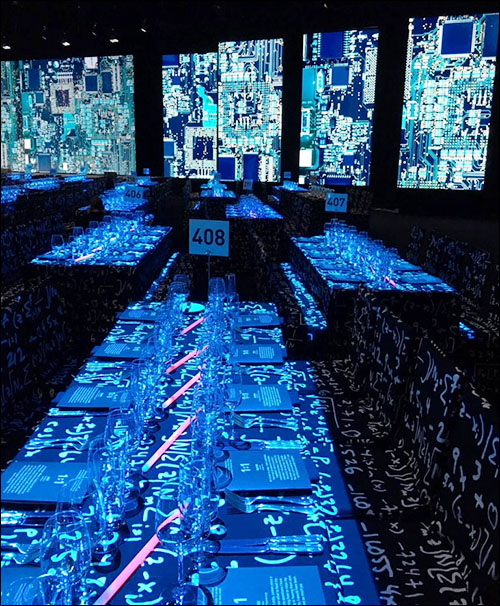Nonprofit anti-poverty group Tipping Point Community raised approximately $15 million at an event this summer that featured an RFID system to ease the process of making contributions. This year’s event was the third that has employed a Near Field Communication (NFC) RFID system from Connect&Go, and the charity says the ease of contributing, thanks to the RFID system, has helped keep the figures high. Nearly all of those contributions took place within a matter of minutes, when individuals wearing RFID-enabled wristbands simply raised their hands. Personnel then scanned the wristbands and the pledges were recorded and displayed on a screen.
Formed in 2005, Tipping Point Community is a grant-making organization that targets poverty in the San Francisco Bay area. The group has committed to cutting the area’s chronic homelessness in half by 2022, in partnership with the City and County of San Francisco. Last year, the group raised $20 million in donor gifts, all of which goes out as grants. The bulk of the contributions arrived on a single day while the charity held its annual benefit.

Charitable giving often depends on emotion, says Jim Hugo, Tipping Point Community’s director of events, and requiring credit cards or the inputting of data can interfere with that process. “At Tipping Point Community,” he explains, “we believe emotional storytelling is a strong lever for inspiring our audience to get involved in the fight against poverty.”
When speakers tell their stories at the charitable event, the goal is to inspire guests to give. “These stories can often move guests to tears—both out of sadness and, more importantly, out of triumph,” Hugo says. “So when the time comes to ask for guests to contribute, we do not want to pull them out of the powerful emotions they are feeling.”
Traditionally, pledging was carried out manually, on paper, with volunteers recording the ID number of each individual making a pledge, along with the amount being given. The group wanted something that would make the process easier for volunteers working at the event, as well as offer a real-time understanding of how much pledging was taking place—and how much was still needed to reach specific goals. Then there was the emotional component, from the guests’ perspectives. Worrying about how to use a device, who to make a check out to, or if they had entered their credit card number correctly could quickly jolt them away from that moment, Hugo notes.
Connect&Go offers experiential solutions using RFID technology, as well as payment and access-control solutions, leveraging NFC RFID technology to make a transaction automatic. For experiential systems, customers often bring a unique challenge to the technology company, according to Sara El Bain, Connect&Go’s sales director. “Usually,” she says, “the client comes to us with an objective, and we offer a solution that fits their specific needs.”
Connect&Go began working with Tipping Point in 2016 to create a system that could make guest pledging more seamless and spontaneous, El Bain says. The event generates a large amount of money within a short span of time, with about 1,000 to 12,000 guests typically making high pledges. The solution the firm developed was intended to make that possible, both quickly and accurately. “We provide an end-to-end solution,” she says, which includes cloud-based software, wristbands, handheld readers and training for those using the system.
As individuals arrived at the event, they were each given a wristband with a built-in NFC tag. A unique ID encoded on each tag was linked to personal information about the corresponding individual and his or her table assignment, though it did not include that person’s credit card information. Instead, Tipping Point opted to contact the donators individually after the event to retrieve the credit card information personally.
The audience watched performances and listened to speakers, after which the pledging began. The process moved fast at this point, the company reports. The donations started with $1 million pledges and decreased from there. For each pledge amount, individuals raised their hand if they wished to donate.
Volunteers working the event were equipped with Connect&Go’s handheld NFC readers. The company employs readers from a variety of vendors, El Bain says, depending on the specific needs and environment for each deployment. As hands were raised, the volunteers approached each individual and tapped the reader against his or her wristband. The Connect&Go app installed on the reader captured the bracelet ID number for that person and transmitted that data via a Wi-Fi connection to the cloud-based Connect&Go server, which then linked the specific pledge amount with him or her.
The event also included a large screen on stage, connected to the Connect&Go software. As each tag ID was read, the individual’s name was displayed on the screen. The data was also stored in the software, and the contribution amounts were calculated in real time, as well as displayed on the screen. “Our guests were able to see what a large dent in the fight against poverty they were collectively making,” Hugo says. After the event, Tipping Point volunteers contacted the donors individually to collect the pledge amounts.
With the system in place, Hugo reports, volunteers had an easier experience capturing each pledge accurately, thanks to the elimination of paper and pen. What’s more, he says, the automatic display of pledge totals provided more excitement and incentive to donate. “We received feedback that the fundraising felt faster and more exciting,” Hugo states, “which, I believe, was largely due to RFID streamlining.”
Since the event takes place near Silicon Valley, Hugo notes, the expectations for cutting-edge technology were set high, and the system impressed even this high-tech audience. Since the first event, he says, the system has been tweaked, but has operated in largely the same way each year. “RFID feels fresh and innovative when its application is additive to the event flow,” he adds, “and not used as a technology gimmick.”



